Geology collections
A geology collection of around 500 locally found rocks and fossils was donated to Astley Cheetham Art Gallery by the family of local science teacher and collector Robert Jackson in 1933. Some of these fossils will be on display in ‘Nature’s Wonders’ as well as a number of fossils on loan from Manchester Museum.
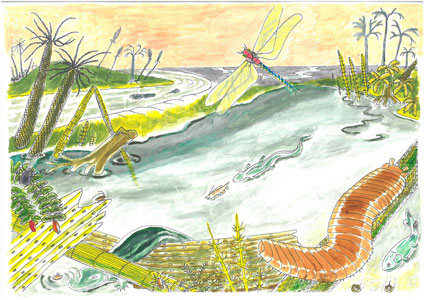
Artists impression of swampland. Copyright Chantal Johnson, Eye-Opener Experiences.
Using clues from locally found fossils and rocks, we think that this part of Britain was part of a vast swampland close to the Equator around 300 million years ago. The swampland had quiet lagoons and freshwater lakes that were often cut by powerful rivers heading to the sea. Animals and plants were quickly buried by layers of mud and silt and over time the soft tissues broke down leaving the bones or shells behind to form fossils which are preserved remains or impressions of dead organisms. Huge fast growing trees and plants flourished in this environment and when they died the dead plant matter decayed to become peat. This was then converted into coal by the heat and pressure of deep burial over millions of years. The picture above is an artist’s impression of how this swampland would have looked.
All of the fossils on display will be from the time frame known as the Carboniferous period. The word comes from the Latin words ‘carbo’ meaning coal and ‘fero’ meaning ‘to bear’ as during this period large deposits of coal began to form throughout Europe, Asia and North America.
Fossils in this exhibition represent the three main areas that would have been typical of this environment:
Dukinfield Marine Band:
Fossil sea creatures such as the goniatite and dunbarella show us that the sea flooded the swampland. The layers of sediment and sea creatures left behind are known as Marine Bands and Dukinfield has such an area named after it. This is because Dukinfield is situated on the site of a vast ancient lake or swamp.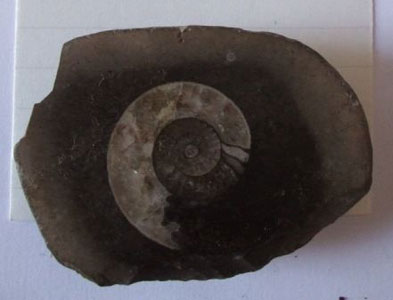
This photograph shows a fossil of a goniatite - an ancient sea creature that had soft squid-like tentacles coming out of its coiled shell. They were older relatives of ammonites.
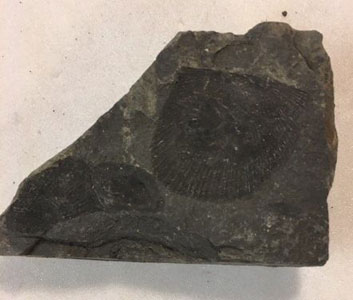
Dunbarella was a thin shelled ‘bivalve’ (with two hinged shells) that lived on the sea floor.
Courtesy of Manchester Museum
Prehistoric Swamp
Plants such as seed ferns would have flourished in the warm moist environment of the swamp. Seed ferns are not ‘true’ ferns as we know them – they were tree like plants with woody trunks and large fronds bearing fern-like leaves.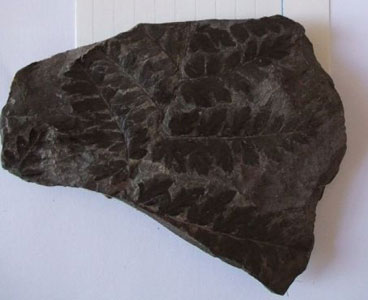
This example was found at Hough Hill in Stalybridge. Can you see the shape of the fern leaves (or ‘fronds’) against the dark rock?
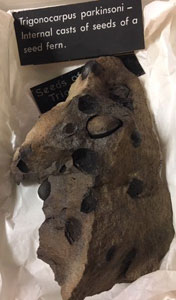
This text alongside image please: This photograph shows a fossil outlines of some large nut-like seeds that would be found in local coal rich rocks. They probably once dangled on the end of a delicate fern- like leaf. You can see these in the artist’s impression of the swampland above.
Courtesy of Manchester Museum’
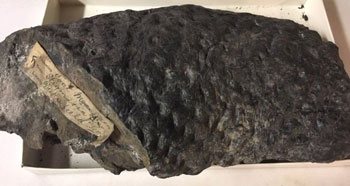
Courtesy of Manchester Museum
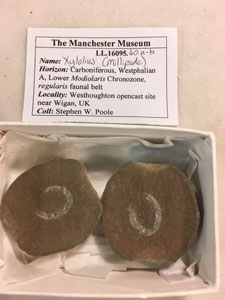
Add this text alongside the image please: These fossils are from a tiny millipede known as Xylosius – it probably crawled along the swampy floor eating dead and rotting plants. These specimens were found in Westhoughton near Bolton.
Courtesy of Manchester Museum’
Sea bed:
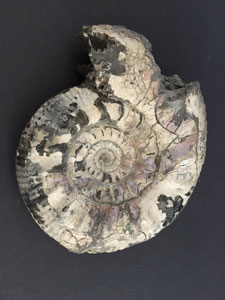
Ammonites were a type of extinct invertebrate creature with a soft body. They lived in the sea and are well-known for their spiral segmented shell. In folklore they were known as ‘snake stones’ as they were thought to look like coiled and headless snakes.
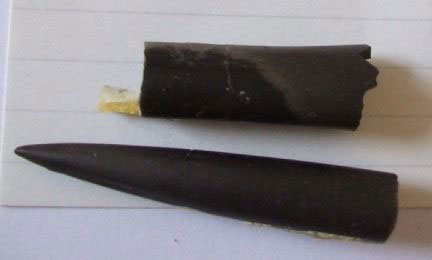
Belemnites were marine animals that had a squid-like body but, unlike modern squid, they had a hard internal skeleton. This formed a bullet shape in the animal’s tail and belemnites take their name from the Greek word ’belemnon’ meaning dart or javelin. They were also known in folklore as ‘thunderbolts’ created allegedly during thunder storms whenever a bolt of lightning hit the ground.

